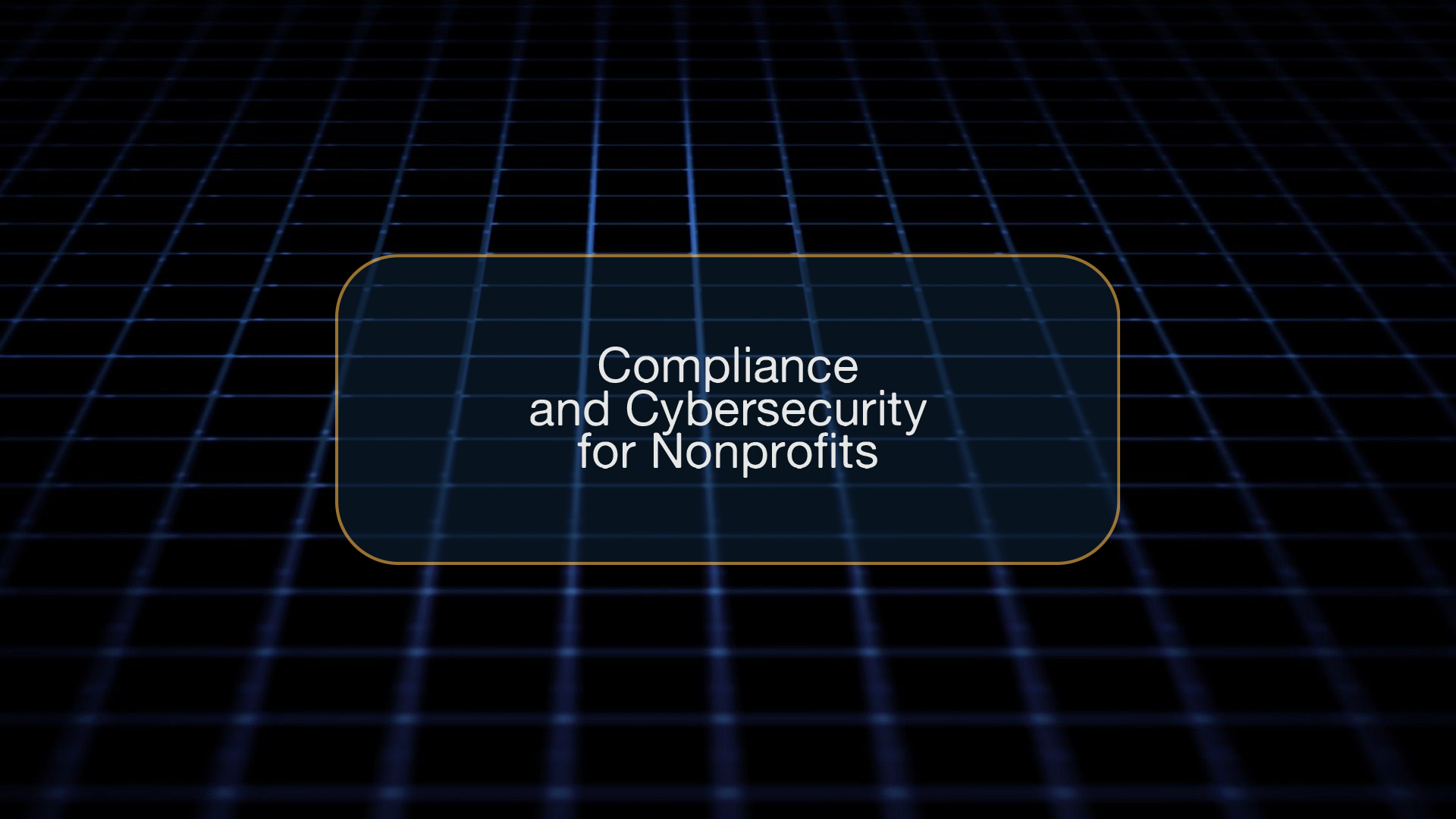Compliance & Cybersecurity for Non-Profits
Non-profit organizations manage a wealth of sensitive information, from donor financial details to confidential data about the communities they serve. This makes them a prime target for cyberattacks. Protecting this data isn't just a matter of good practice; it's a legal requirement. Failure to comply with data protection regulations can lead to severe financial penalties and, more importantly, a loss of trust from donors and partners.
For any non-profit, understanding the landscape of compliance and implementing robust cybersecurity measures is essential for long-term success and sustainability. This guide will walk you through the key regulations, essential security practices, and strategic planning needed to safeguard your organization. By taking a proactive approach to cybersecurity, you can protect your mission, your reputation, and the people you support.
Understanding Compliance Requirements for Non-profits
Navigating the web of data protection regulations can seem complex, but understanding the key requirements is the first step toward compliance. While specific obligations can vary based on your location and the type of data you handle, several major regulations have a broad impact on non-profits.
GDPR (General Data Protection Regulation)
Even if your organization is based outside the European Union, the GDPR applies if you process the personal data of individuals residing in the EU. This could include donors, volunteers, or event attendees. Key principles of GDPR include obtaining explicit consent for data collection, ensuring data is used only for its stated purpose, and providing individuals with the right to access or delete their data. Non-compliance can result in substantial fines, making it critical for non-profits with a global reach to adhere to these standards.
HIPAA (Health Insurance Portability and Accountability Act)
For non-profits operating in the healthcare sector or handling protected health information (PHI), HIPAA compliance is non-negotiable. This regulation sets the standard for protecting sensitive patient data. Any organization that provides medical services, counseling, or handles health-related information must implement strict physical, administrative, and technical safeguards to ensure the confidentiality and security of PHI.
PCI DSS (Payment Card Industry Data Security Standard)
If your non-profit accepts credit card donations online or in person, you must comply with PCI DSS. This set of security standards is designed to ensure that all companies that accept, process, store, or transmit credit card information maintain a secure environment. Compliance involves measures like encrypting cardholder data, using firewalls, and regularly monitoring and testing security systems to prevent data breaches.
Essential Cybersecurity Measures for Non-profits
With a clear understanding of your compliance obligations, the next step is to implement technical safeguards to protect your digital assets. These foundational cybersecurity measures form the core of a strong defense strategy.
Firewalls:
A firewall acts as the first line of defense for your network, monitoring and filtering incoming and outgoing traffic based on predetermined security rules. It creates a barrier between your trusted internal network and untrusted external networks, such as the internet, blocking malicious traffic before it can cause harm.
Intrusion Detection Systems (IDS):
An IDS complements a firewall by monitoring network traffic for suspicious activity or policy violations. If a potential threat is detected, the system alerts an administrator, allowing for a swift response to mitigate the risk. This proactive monitoring is crucial for identifying sophisticated attacks that might bypass a firewall.
Regular Security Audits:
Technology and cyber threats are constantly evolving. Regular security audits, conducted by internal teams or external experts, are essential for identifying vulnerabilities in your systems. These audits should include penetration testing and vulnerability scanning to assess your defenses and ensure your security measures remain effective over time.
Developing a Cybersecurity Plan
A reactive approach to cybersecurity is insufficient. A comprehensive, proactive plan is necessary to manage risks effectively and ensure your organization is prepared for any eventuality.
Risk Assessment
Start by identifying your organization's most valuable digital assets and the potential threats they face. A thorough risk assessment will help you understand where your greatest vulnerabilities lie. This process involves cataloging your data, identifying potential internal and external threats, and evaluating the likelihood and impact of a security incident. The results will guide your security investments and help you prioritize your efforts.
Incident Response Plan
No matter how strong your defenses are, the possibility of a breach always exists. An incident response plan is a documented, step-by-step guide for your team to follow in the event of a security incident. This plan should outline roles and responsibilities, communication protocols, and procedures for containing the threat, eradicating it, and recovering normal operations. Having a clear plan in place minimizes damage and ensures a swift, coordinated response.
Employee Training
Your employees are a critical component of your cybersecurity posture. Regular training programs are essential to educate your staff about common threats like phishing, malware, and social engineering. When employees understand their role in protecting the organization's data and are equipped to recognize and report suspicious activity, they become a powerful line of defense.
The Role of Cybersecurity Insurance
Even with the best planning and technology, a security breach can still occur. Cybersecurity insurance provides a financial safety net to help your non-profit recover from a cyberattack. This type of insurance typically covers costs associated with data recovery, legal fees, regulatory fines, and public relations efforts needed to restore your organization's reputation. For non-profits, where budgets are often tight, cybersecurity insurance can be a crucial tool for mitigating the financial impact of a security incident.
Fortify Your Organization’s Defenses
Protecting your non-profit from cyber threats is not just an IT issue; it is a fundamental aspect of responsible governance and operational resilience. By understanding your compliance requirements, implementing essential security measures, and developing a proactive cybersecurity plan, you can safeguard your sensitive data and maintain the trust of your donors and community.
A strong cybersecurity posture enables you to focus on what truly matters: advancing your mission. If you are ready to strengthen your organization’s defenses and ensure compliance, our team is here to help. Contact us today for a comprehensive security assessment.
FAQ:
- What is the biggest cybersecurity threat to non-profits?
Phishing attacks remain one of the most significant and frequent threats.
- How often should we conduct employee security training?
Training should be conducted at least annually, with regular updates and reminders.
- Is cloud storage secure for non-profit data?
When configured correctly with strong security controls, cloud storage can be very secure.
- Can our non-profit afford a robust cybersecurity program?
Scalable and affordable solutions are available for organizations of all sizes.
- Where can we get expert help with our cybersecurity and compliance?
Our team specializes in providing tailored security solutions for non-profits; contact us today to learn more.








